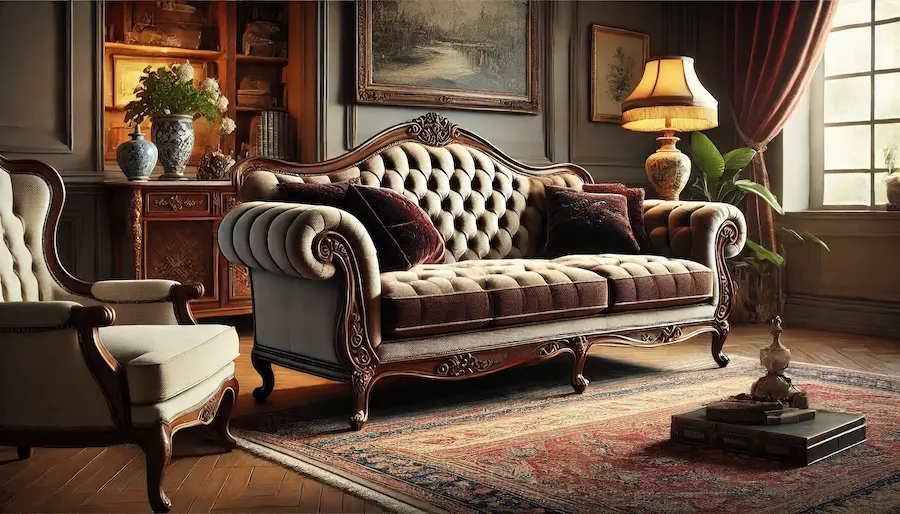Classic sofas are timeless pieces that blend elegance, craftsmanship, and comfort, often featuring intricate designs and high-quality materials. This article explores their history, key features, applications, considerations for selection, and concludes with insights into their enduring appeal.
Introduction to Classic Sofas
A classic sofa embodies traditional design elements, such as rolled arms, tufted upholstery, and ornate wood carvings. These sofas are often associated with styles like Victorian, Chesterfield, and Louis XV, reflecting a rich heritage in furniture design.
History and Origins of Classic Sofas
The evolution of classic sofas spans several centuries:
- 17th Century: The Knole settee, originating around 1640, is considered one of the earliest predecessors of the modern sofa. It featured adjustable side arms and was used as a formal throne-like seat for aristocrats.
- 18th Century: The Chesterfield sofa, characterized by deep button tufting and rolled arms, is believed to have been commissioned by the 4th Earl of Chesterfield, Lord Phillip Stanhope. This design became synonymous with sophistication and comfort.
- 19th Century: The Victorian era introduced elaborate and heavily ornamented sofas, featuring dark woods and rich fabrics. Advances in manufacturing during the Industrial Revolution made such furniture more accessible to the middle class.
Key Features of Classic Sofas
Classic sofas are distinguished by several hallmark features:
- Ornate Detailing: Intricate wood carvings, scrolled arms, and decorative legs are common in classic sofa designs.
- Tufted Upholstery: Deep button tufting adds texture and a sense of luxury.
- High-Quality Materials: Use of premium fabrics like velvet or leather, and sturdy hardwood frames.
- Elegant Silhouettes: Graceful curves and symmetrical designs contribute to a timeless aesthetic.
Applications of Classic Sofas
Classic sofas are versatile and can enhance various settings:
- Formal Living Rooms: Serve as statement pieces that elevate the elegance of the space.
- Libraries and Studies: Provide a sophisticated seating option that complements traditional décor.
- Boutique Hotels and Historic Homes: Add authenticity and charm to period interiors.
Considerations When Choosing a Classic Sofa
When selecting a classic sofa, consider the following factors:
- Space and Proportion: Ensure the sofa’s dimensions suit the room size and layout.
- Material Durability: Choose fabrics and finishes that withstand intended use and match maintenance capabilities.
- Comfort: Assess cushioning and support to meet personal comfort preferences.
- Aesthetic Harmony: Select a design that complements existing décor and architectural elements.
Conclusion
Classic sofas remain enduring symbols of elegance and craftsmanship in furniture design. Their rich history and distinctive features continue to inspire and enhance interiors, offering both beauty and comfort to various spaces.
